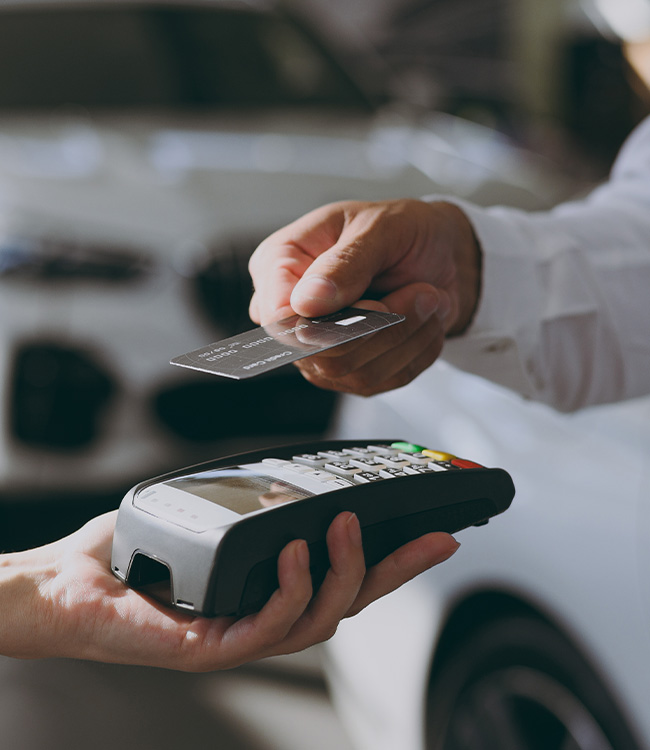As smartphone and tablet ownership continues to rise, consumers are becoming increasingly reliant on their smart devices for their entertainment and multimedia needs. As a result, manufacturers have started introducing ways for consumers to integrate their mobile device into their in-car entertainment and navigation systems.
At the CES technology trade show in January 2014, Audi unveiled a new, self-produced Android tablet, the Audi Smart Display. The 10.2-inch tablet connects and interacts directly with the car through the vehicle’s Wi-Fi and can be used outside the vehicle as a stand-alone tablet. Audi has also begun including a wireless charging phone box in the centre of the dash of its latest cars.
Sony has approached the issue of lack of smart device integration in cars from another angle with its XSP-N1BT double-DIN Smartphone Cradle Receiver. The XSP-N1BT replaces existing in-car stereos with a dock which can support third party iOS and Android smartphones. The dock connects the phone to the car, with the phone acting as the car’s central entertainment and navigation system.
Volvo has unveiled its own in-car system called Sensus Connect. The system connects to the smartphone and uses the phone’s sim and data plan to provide an in-car internet connection via the roof-top antenna. Volvo state that the direct connection to the internet means that users can pay for parking without leaving their car, discover new restaurants at their destination and stream music easily. The phone is able to send directions to the in-car navigation system, and the car can act as a mobile Wi-Fi hotspot, allowing other mobile devices to connect to the Internet.
Android and iOS to take over in-car system
Google and Apple are currently working with the car manufacturing industry to create built-in systems which run the Android and iOS platforms respectively. As well as being stand-alone entertainment and navigation systems, they would also allow for connectivity and integration with smart devices.
Apple is expected to enter the in-car navigation and entertainment market in 2014 with the launch of full in-car iOS integration. The system will run on iOS, and provide apps for navigation, calls, messaging and radio as a minimum, with more apps expected to be added prior to its release. Apple is working with over twelve car manufacturers currently, including Mercedes-Benz, Volvo, Jaguar and Porsche.
Google has formed the Open Automotive Alliance, which partners Google and Nvidia with Audi, General Motors, Hyundai and Honda. All future in-car systems produced within the alliance will be fully compatible with Android devices, such as the current Audi Connect which utilises Google Earth navigation with Google Street View, up-to-date traffic information and more, all accessible through the car’s own interface.
Car manufacturers will benefit from the large customer base of both iOS and Android operating systems, which is only set to grow as the number of people owning smartphones and tablets continues to increase. Consumers will benefit from vastly improved functionality, but the car industry does however, run the risk of becoming homogenous, with little to differentiate between different car brands as the two operating systems may dominate the market.
Car manufacturers may look to wearable tech as a means to differentiate their in-car systems from others, such as Hyundai’s new Genesis luxury car set to launch in the UK in summer 2014, which will feature its latest Blue Link multimedia platform, which will incorporate Google Glass support. Once Google Glass is paired with the car, information, which may include speed and directions, can be seen by the user through the Google Glass lens.
Similarly, Mercedes has partnered with Pebble Technology to allow its DriveStyle app to communicate with the Pebble Smartwatch. Outside the vehicle, Pebble users can check car information such as fuel level, door-lock status and vehicle location, whilst in the car; the watch can notify the user of real-time hazards through V2V technology.
The expectation is that wearable technology will become increasingly more popular and common, and for car manufacturers, wearable technology integration could be the unique selling point that makes it stand out from competitors. Introducing wearable technology into the motor industry shouldn’t prove too difficult either, if Android and iOS platforms become a standard across a wide range of manufacturers, the creation of designated wearable tech apps will allow for a relatively simple integration.
For more information, see Mintel reports Media Consumption Habits UK 2013 and Tablet Computers UK 2013.
Ryan Munson is a Research Analyst at Mintel. Ryan specialises in research for the leisure and technology markets, recently including the Children’s Media, Smartphone and Tablet Gaming, Bundled Communication Services and Mobile Phone markets.


























